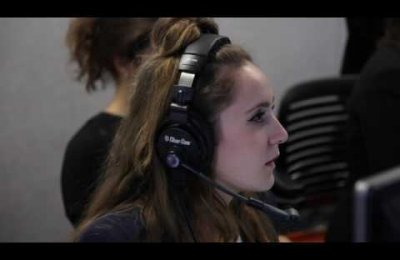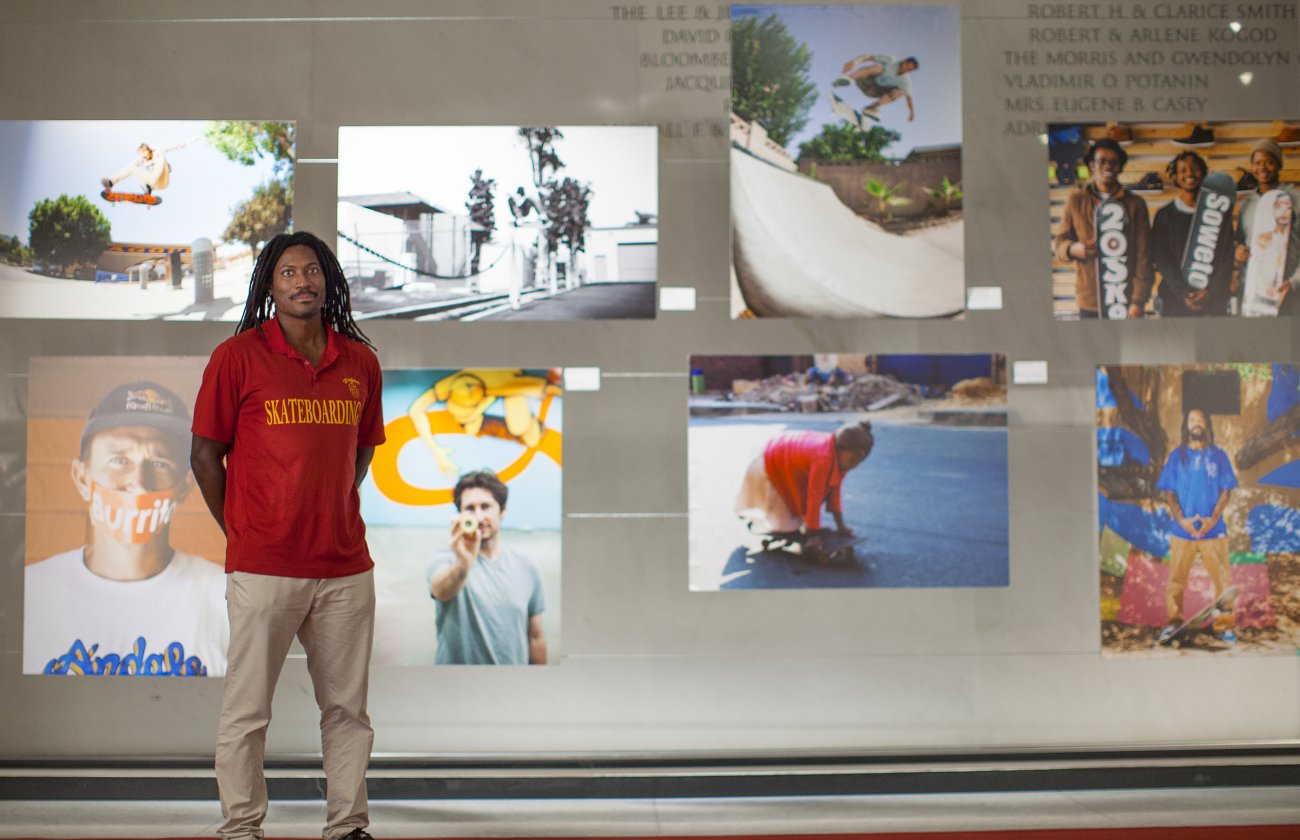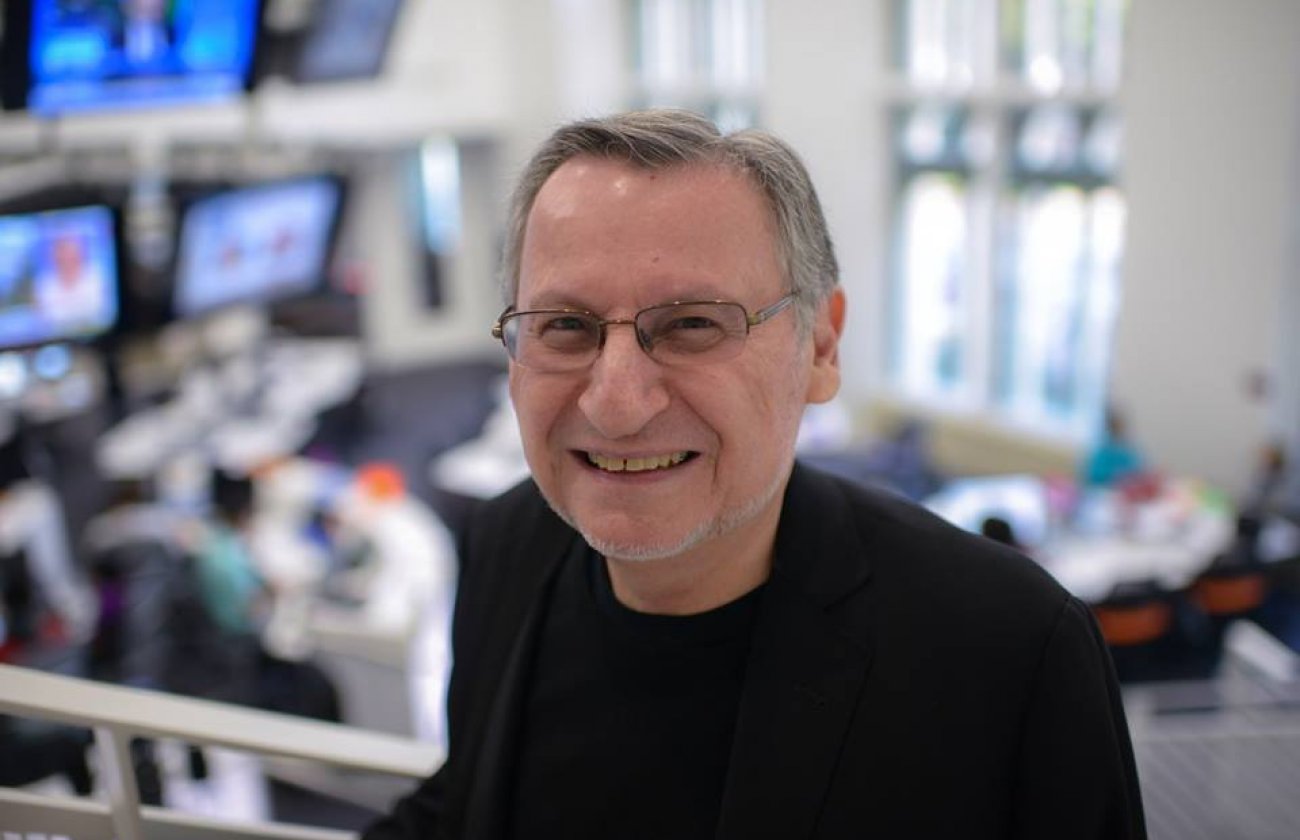Good morning, everyone! And welcome to this very special ceremony as we dedicate Wallis Annenberg Hall.
This building stands at the heart of our university, and that is no coincidence. In the digital Age of Information … communication and journalism lie at the heart of human connectivity. Today, as we embrace the birth of a revolutionary building dedicated to advancing the fields of communication and journalism, we also embrace a philanthropist dedicated to advancing the lives of students: Wallis Annenberg. Her dedication is rooted in an unwavering drive to promote access and connection. For Wallis, access means students having the latest digital storytelling tools at their fingertips. It means creating a building that enables students to showcase their work and better connect them to the campus and the world around them. And true to Wallis’ student-centered focus, it means establishing an environment that puts students front and center. Wallis’ focus — her vision for what the Annenberg School could become — has crafted a building truly aimed at students and the advancement of their imaginations. Here, students will acquire legacy skills and legacy ethics while learning how to use modern platforms. They will balance the demand for instantaneous information with the time-tested traditions of storytelling. They will, in a time of convergent media, master all domains of contemporary journalism, and move between them fluidly. One minute, students may be doing a story for Annenberg Radio News… …And then have to jump to editing video for Annenberg Television News… …And a short time later find themselves creating a multimedia piece for Neon Tommy.
Finally, they can do all this under one roof. In fact, seventy percent of the Annenberg School’s classes are now conducted within these cutting-edge spaces … connecting students to the most relevant digital tools in the richest of learning environments. Students will produce compelling content across multiple disciplines for multiple audiences … an ability — digital media literacy — that’s critical for USC students to possess. Perhaps no other place on campus is better suited to promote literacy in digital media than Wallis Annenberg Hall. Thanks to Wallis’ visionary support, Annenberg students will have access to digital tools of the future. And while some have argued that the tools and devices of our Digital Age are isolating us, Wallis Annenberg Hall was in part designed to counterbalance this dynamic of division. Bearing testimony to Wallis’ vision of access and connectivity, the building is full of physical spaces that encourage collaboration and cooperation. It is also home to some of the most creative minds … faculty and students who will push the limits of technology and communications. They will redefine how we connect, how we think, how we access information and experience our days. With the opening of Wallis Annenberg Hall, we are creating singular scholarly experiences for our students.
On all levels, there is a new vigor coursing through the school, and I would like to acknowledge a few key individuals who are responsible for Annenberg’s resurgence. The Annenberg School would not be where it is today without the inspiring leadership of Dean Ernie Wilson and the work of our new directors. Sarah Banet-Weiser, director of the School of Communication, is promoting a fresh culture of collaboration with the School of Journalism … which is now led by the trailblazing journalist Willow Bay, who brings a wealth of practical experience. Director Bay’s diverse body of work — from producer and anchor to acclaimed author — is extraordinary, and is a true testament of her dedication to journalism. She is an asset to the university, and a role model for Annenberg students. Working together, Dean Wilson and Directors Banet-Weiser and Bay are infusing a spirit of excitement, adventure, and resilience into the Annenberg School. But this new chapter for USC would not have been possible without our dear friend and colleague, Wallis Annenberg. As the chairman of the board, president and CEO of the Annenberg Foundation, she has made a wide-ranging impact across society in education, communications, arts and culture, medical research and beyond. Through her profound foresight and leadership, support from the Los Angeles office of the Annenberg Foundation is transforming the face of Los Angeles. From the Annenberg Community Beach House to the Wallis Annenberg Center for Performing Arts, Wallis is truly both a patron and steward of Los Angeles. She not only makes Los Angeles a better place to live, but our university a better place to learn. As USC’s longest-serving trustee, Wallis has provided strong guidance and sage counsel to this university for over 40 years. While we refer to her as the “Dean of USC’s Board of Trustees,” she is no doubt more proud to be a champion of USC’s students. Throughout the years, her sustained support of the Annenberg School has allowed it to flourish. Today, as we cut the ribbon and open Wallis Annenberg Hall, we forever link her name at USC, as well as her enduring legacy here. And in doing so, we forever give Annenberg students access to a world of exciting possibilities, where they will create and convey timeless stories that connect and chronicle the human journey. And for this, Wallis, we will be forever grateful. Thank you!
—C. L. Max Nikias became the University of Southern California’s eleventh president in August 2010. He holds the Robert C. Packard President’s Chair and the Malcolm R. Currie Chair in Technology and the Humanities, and chairs the USC Health System Board.









